
My eyes had difficulty focusing as I raced down the solitary desert road. The scrubby land slid by as I watched the jagged, weathered black ribbon reveal itself many miles ahead. It was the 7th hour of my drive south from the Bonneville Salt Flats.
I am forever trying to quickly cover vast distances. I seem to always compile a list of places too numerous to visit in my allotted time. There is simply too much I want to study. The tasks of washing, shaving, combing, camping and cooking are just too trivial. I forego comfort, food, rest, bathroom breaks and even sleep to maximize my visits and minimize my travel time.
The 14 mile long service road leading to the ancient ruins of Wupatki (Woo-pot-key) suddenly appeared from behind some scrub.
Downshifting, I applied the brakes with an aggressive stomp and held the the steering wheel tensely, ready to make a quick turn. I slowed just before the turn realizing I was much more tired than I thought.
It was then that I noticed that the desert environment had quickly turned from sparse to shrubby grassland and taller, gnarly trees. I hadn’t seen this much vegetation since descending the mountains in Utah. The black soil was mixed with tiny black pebbles. Something was obviously different.
In fact, the soil was different. It was more fertile and allowed for more vegetation. It was about 100 square miles in a few thousand square miles of desert. A wide expanse in the middle of unforgiving land. Volcanic remnants, I thought, it makes sense now.
Wupatki is in the shadow of Sunset Crater Volcano. Sunset last erupted in 1,000 CE. Just a short 1,000 years ago, a blink of an eye in geological terms. To give that some scale, paper money and Roman Architecture is older.
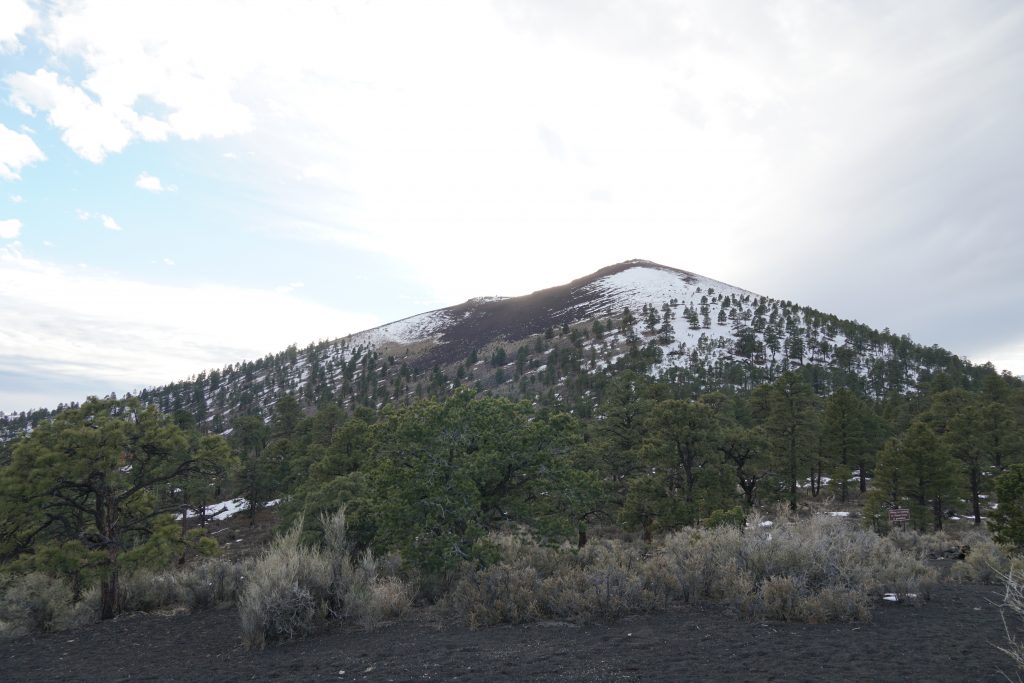
Wupatki was first inhabited around 500 CE. Wupatki is from the Hopi Language meaning “Tall House”. It is the ruins of a multi-story pueblo (village) that boasted over 100 rooms, a community room and ball court. It is the largest building within 50 miles. and includes many surrounding structures. Its history is a little clouded, but the reason the Ancestral Pueblo (formerly called the Anasazi) settled here was starting to make sense. The eruption of Sunset Crater tossed a layer of volcanic ash that covered the area. This made the land far more suitable for agriculture. But only “after” the eruption. Apparently, Wupatki was inhabited before the eruption too.
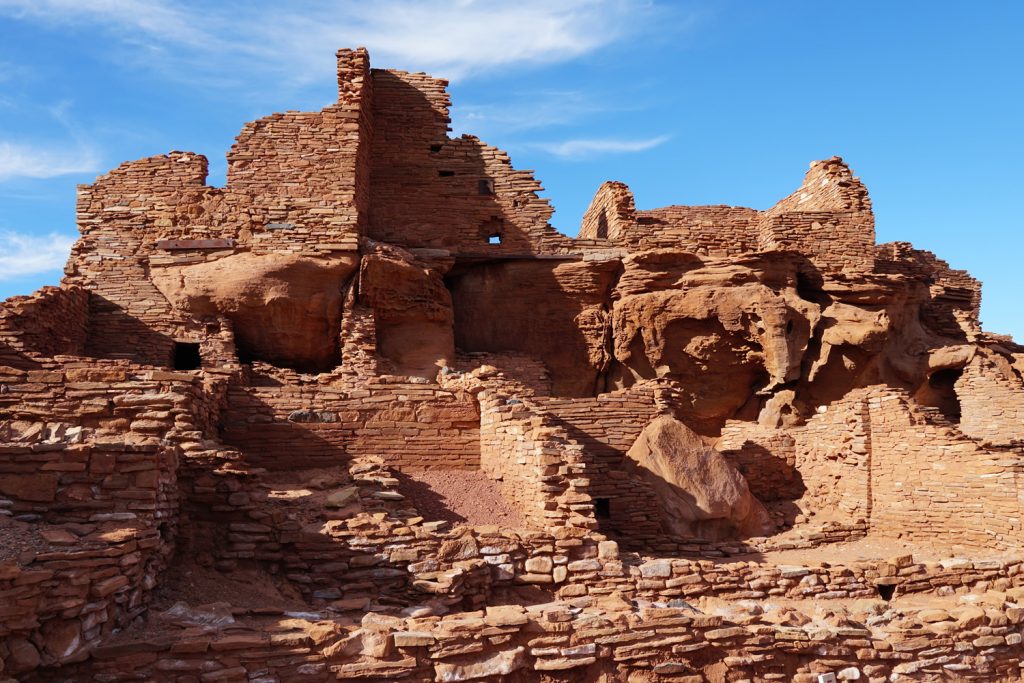
I chose to visit Wupatki (over 100s of other ancient ruin sites) due to its location. It seems to have existed on the intersection of three separate ancient southwest cultures. The Ancestral Pueblo, Hohokam, and Mogollon all ranged near Wupatki.
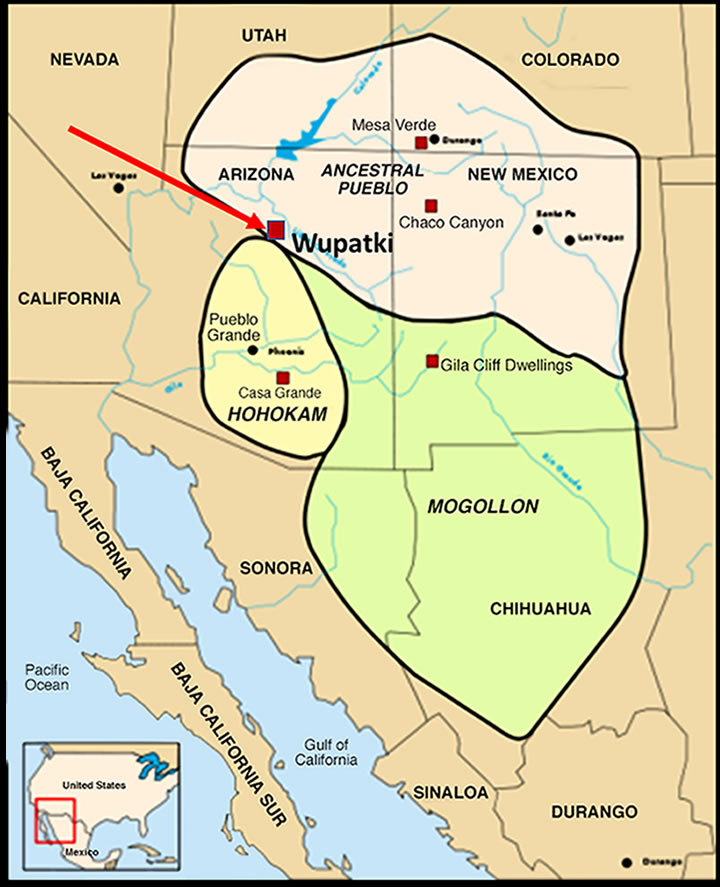
Wupatki does have influences from various cultures. The Architecture seems to be from multiple cultures and archeological digs have produced relics from as far away as the Pacific, Gulf Coast, and southern Mexico. One staff archeologist even claimed (excitedly) that they found a stone flute pipe from the Great Lakes region.
The village grew slowly, then around 1000-1040, the population abruptly left. They most likely were experiencing many rumblings of the earth as the eruptions neared. Shortly after 1040, Sunset Crater exploded onto the scene.
While exploring sunset crater, you can still view evidence of the volcano. Spatter cones, lava tubes, volcanic rock all dot the landscape.
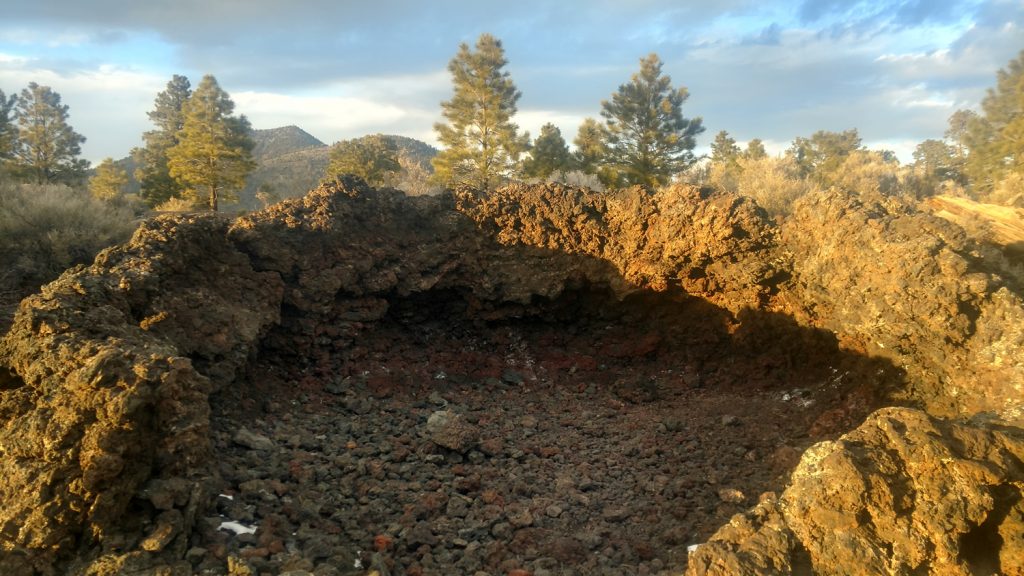
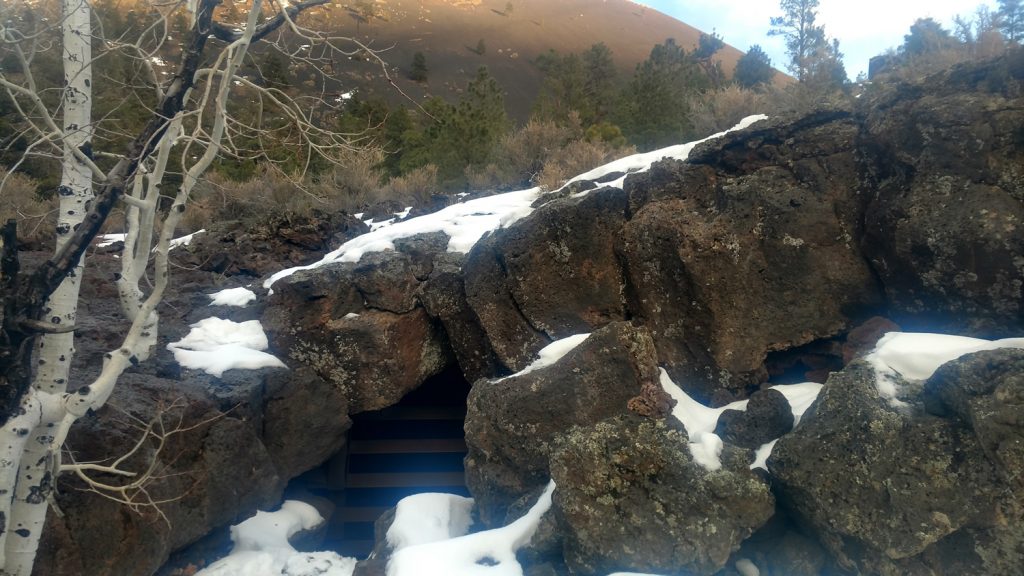
A major population influx began soon after the eruption of Sunset Crater between 1040 and 1100, reaching about 2,000 inhabitants in and around Wupatki Pueblo. By 1182, the main building itself had approximately 85 to 100 people.
It is quite a story, a population quickly rising soon after a volcanic eruption. But, here’s the thing, they all abruptly left and by 1225, the site was completely abandoned. We don’t know why.
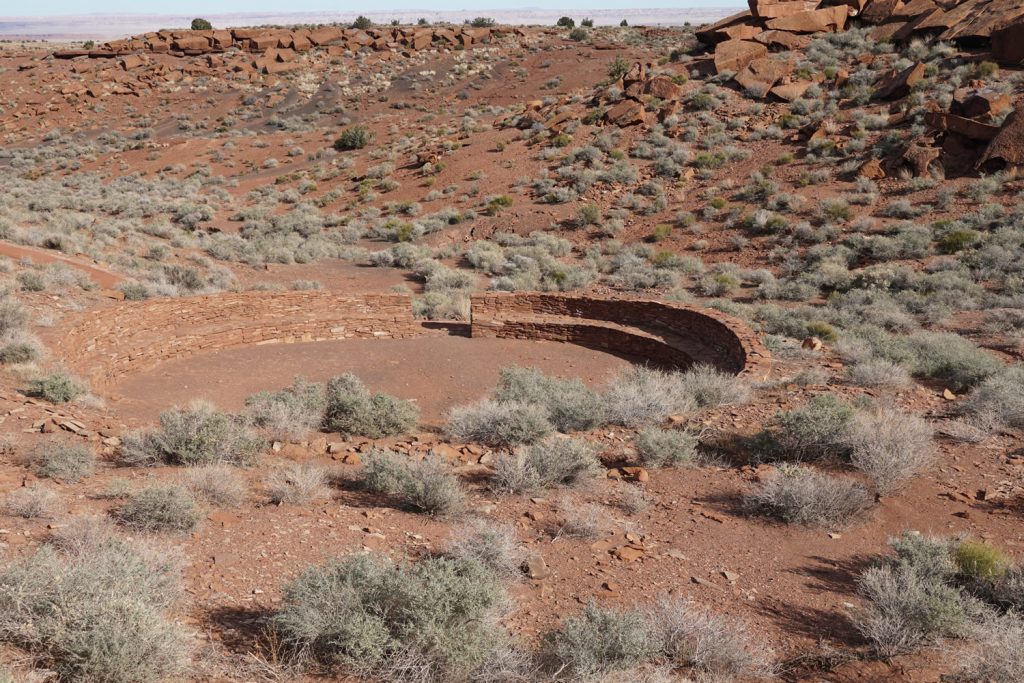
Which is where this all gets interesting. This excursion was taken to find out why. It is a tough task, considering archeology hasn’t found evidence pointing to a reason. But we can certainly explore all the theories.
Did they leave because of drought? Probably not. Although there was a 50 year drought that plagued the region around this time, it didn’t actually start until 50 years after they left.
Was there an invasion by an enemy? Meh, there is very little evidence of an enemy. Archeological digs don’t show evidence of violence during this time.
The volcano? Nope, it was long dormant during the peak of the second occupation.
Tradition? Maybe. . . But, why would they abandoned fertile soil? Although descendents of the Ancestral Pueblo claim their ancestors moved often, it doesn’t seem likely they would abandon one of the most fertile areas in a vastly infertile region.
Other environmental factors? Maybe. Water for crops was provided by a spring near the site, those springs can be unreliable. Evidence of the spring not producing hasn’t been discovered. There isn’t any convincing evidence that there were environmental factors that would have caused such an abandonment.
Why did it happen? Wupatki was one of the first abandonments, just before a mass disappearance of Ancestral Pueblo culture from their settlements. The scientific disciplines have not been able to provide a solid reason as to why the most advanced ancient society in North America suddenly ended. It is a mystery and it seems to have started at Wupatki.
So, lets explore this mystery. Over the next few blog post, we shall discuss what happened after Wupatki and we will try to draw conclusions and cover the theories. Not only for our own interest, but to know why a society just disappears. There seems to be a lesson for us and future societies. For sure, it gets stranger from here. So, stay tuned.



The kitchen. With stones for grinding corn. . . mostly. 
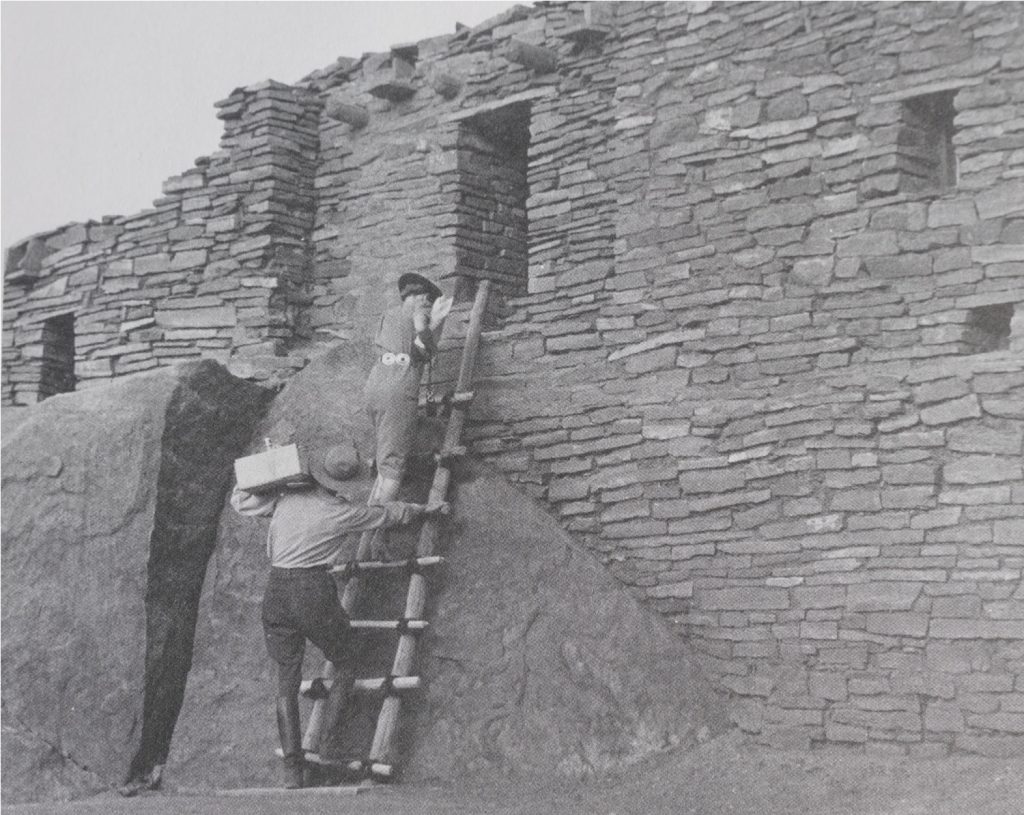
In the first half of the 1900s, the National Park Service actually had park rangers living in the rebuilt pueblos. 
Wupatki 
Wukoki Pueblo was designed and built for attention. It is built on top of a large outcrop. It is widely believed this was done to attract visitors to Wupatki – for trading. 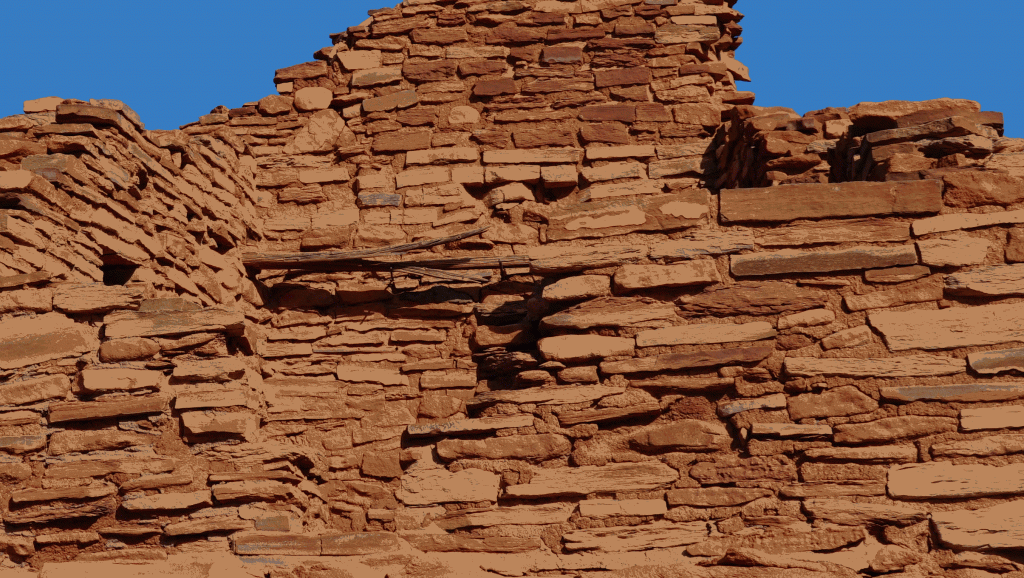
Although Difficult to see, a tree branch over 800 years old still exists at the site. This branch can be tree ring dated, which is considered more accurate than carbon dating.
Part II – The Chaco Phenomenon

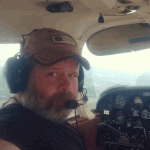
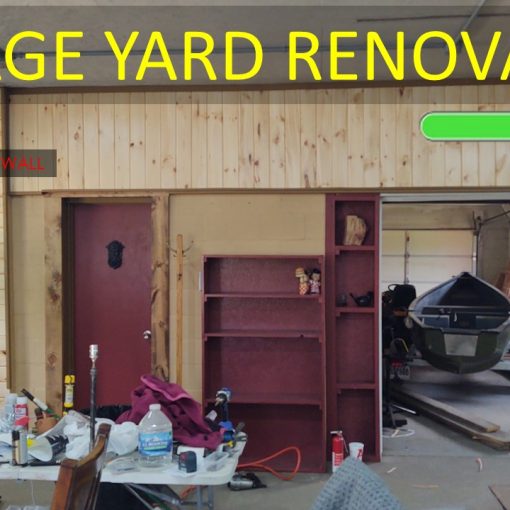
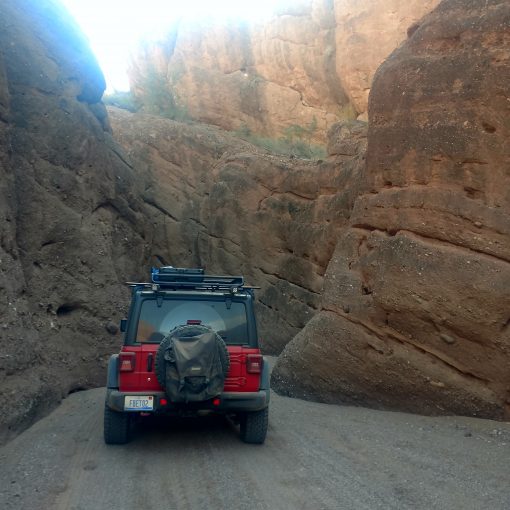
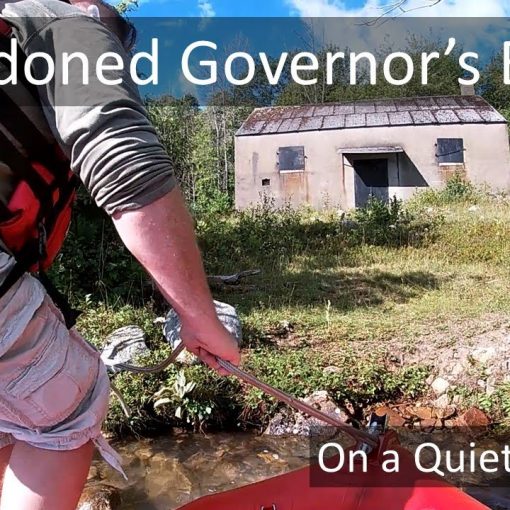
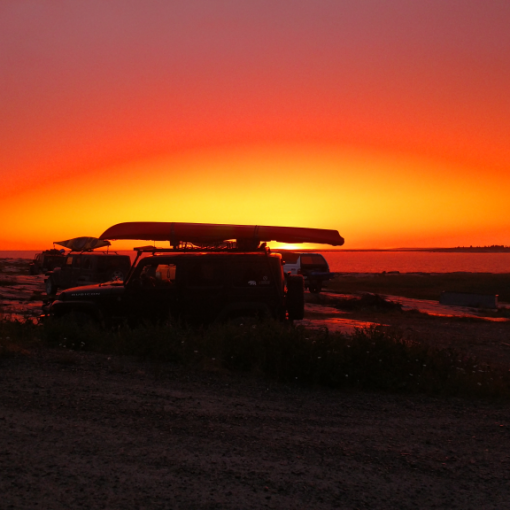
3 thoughts on “Wupatki – The Shadowed Village”
Fascinating. Can’t wait for more.
I cant wait for the next installment! I wonder if this is a mystery that will ever by solved